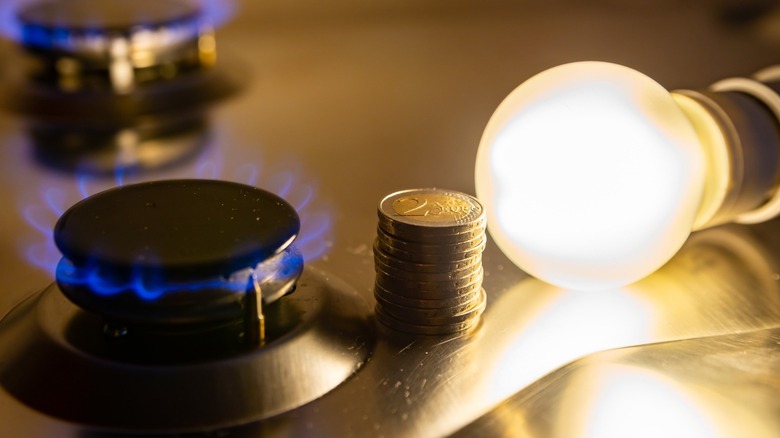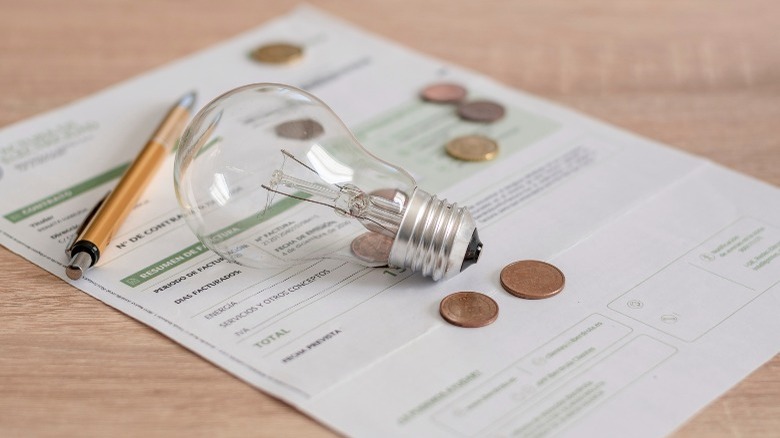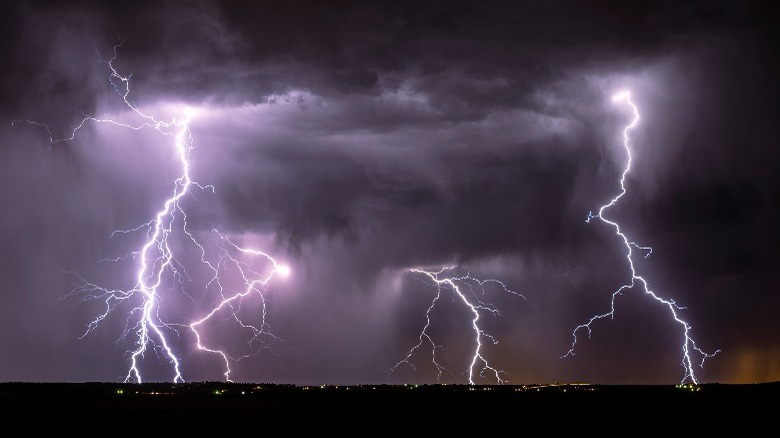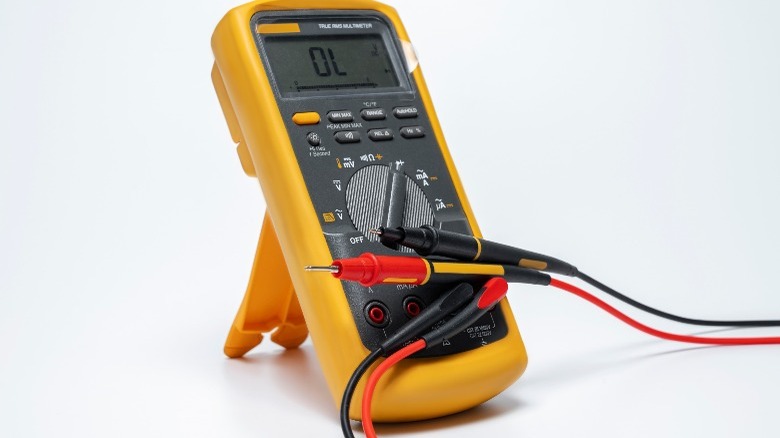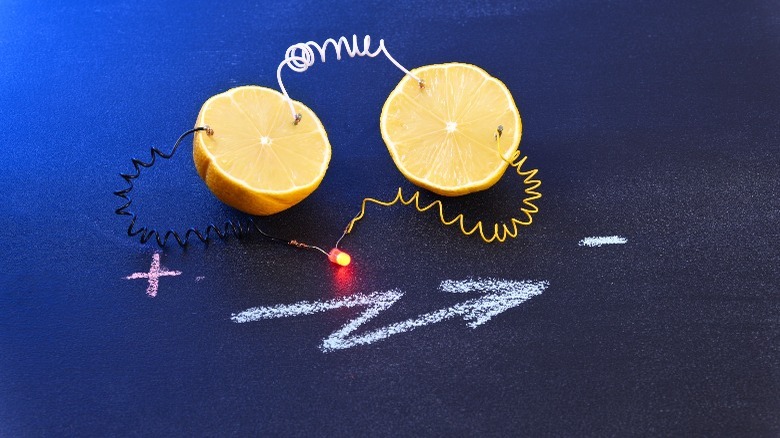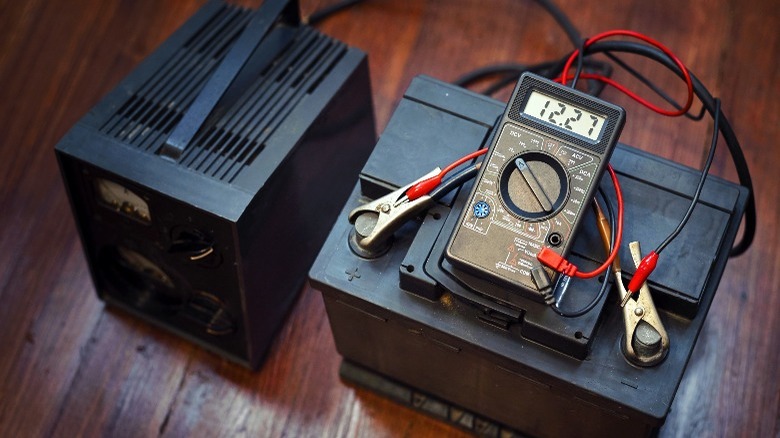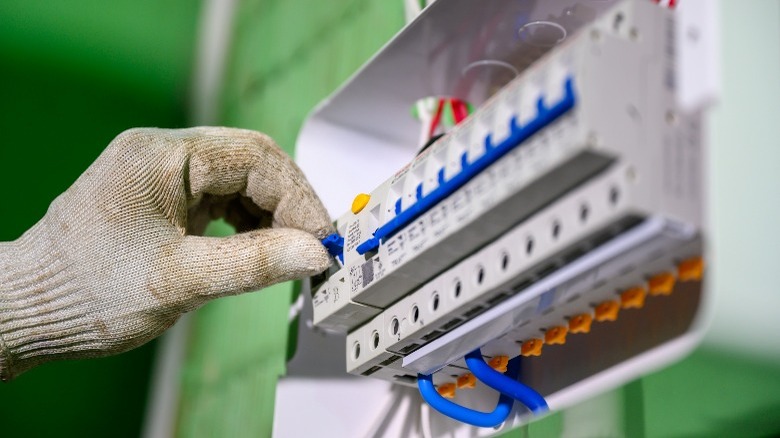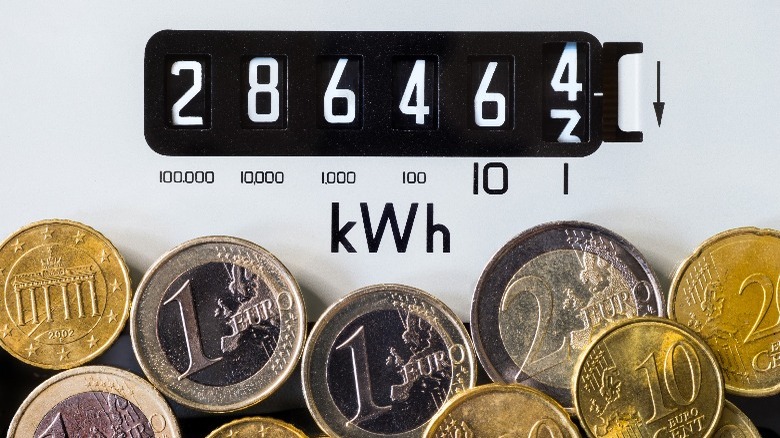Watts Vs Volts: What's The Difference?
Ok, some of you have come to expect this author's corny jokes, so how many bureaucrats does it take to change a light bulb? One to change it, and 99 to write the report on the environmental impact. (Ha!) But seriously folks, what do you know about electricity? If your answer is, "Not much," keep reading. After all, electricity is extremely important to our day-to-day lives, and undoubtedly you'll have a situation come up where you'll need to understand certain simple terms. That's what this article is all about, and we aim to give you a crash course! We'll start with the most fundamental terms about measuring electricity, and by the time you finish reading this, you'll be able to read and understand your next electric bill.
For example, do you know what a circuit refers to? Well, according to Wire Craft Electric, it can be pictured as a loop that can't be broken, in order for anything that runs on electricity in your home to function. When you turn on your coffee maker in the morning, the circuit of electricity begins with electrons traveling through the wire to the outlet and back to the appliance, giving it power. This continues in a loop until the power is turned off or unplugged. What's a short circuit, then? For one thing, it can cause a fire or overheating, which can ruin the appliance, and poses a serious danger to occupants if a fire starts. To understand more about how this happens, let's move on to other simple terms you need to know.
What's a watt?
According to Building Green, you can think of a watt (W) as you think of a mile per hour, only measuring energy, instead of distance. We talked a little about circuits and electrons. Watts are the measurement for how fast the electrons are moving through the circuit. One watt is equal to one joule per second, which is equal to 3.4 BTUs per hour. Remember when we bought light bulbs according to watts? A 60-watt light bulb consumes energy at the speed of 60 watts. But before we can understand that, we need to talk about kilowatts (kW), and kilowatt hours (kWh). A kilowatt is 1,000 watts, and a kilowatt hour represents 1,000 watt hours. While watts are the measurement of power, kilowatt hours are the measurement of energy. This is how your energy usage is displayed on your utility bill, which we'll get to later. In summary, a watt is the measurement of how fast the electrons are moving through the circuit. One watt is equal to one joule per second, and incidentally, this is part of the metric system. (Formula: watts = amps x volts.)
What is a volt?
Alright then, now that we know what a watt is, what is a volt? Things get a little more confusing here, so stay with us. According to Gateway Cable Company, going back to our circuit, it's the amount of force pushing those electrons through the circuit. This is a very simplified way to put it, but quite frankly, the technical explanation is difficult to grasp. A volt measures the difference of electric potential between two points of a circuit, when the power resistance between them is one watt, and a conductor is carrying a constant current of one amp. Voltage is also referred to as EMF — electromotive force. One volt is equal to one joule of energy.
But it's important to know about these things to some degree. According to Battle Born Batteries, it's further simplified by describing volts as the measurement of electrical pressure. And remember our electrons? When electrons build up on one side of the point in a circuit, the pressure that's built up is voltage. When you get a spark in your finger from static electricity, that measures about 25,000 volts. 50,000 volts or under is not enough to do any serious damage to the body, but when the voltage increases, so does the pressure of potential electrical energy. Most residential homes in the United States are wired at 120 volts, except for certain appliances such as a dryer, which is 240 volts. But these outlets are a different configuration and will appear different. (Formula: volts = watts/amps.)
What is an amp?
First of all, the word amp is actually an abbreviation for the word ampere (via Battle Born Batteries). An amp is the measurement of a unit of constant electrical current – the rate of the flow of electricity in the current is measured by amps, or amperage. The rate of the flow can be measured with an ammeter, just like volts can be measured with a voltmeter –- a multimeter measures volts, amps, and resistance (ohms).
Amps are important for homeowners to know because each outlet in your home is connected to a circuit breaker, and each breaker is a certain amount of amps, to be able to handle the things you plug in. If something in your home keeps tripping a breaker, it's likely you have too many amps running through a breaker that isn't equipped to handle the number of amps running through it. In this case, you'll want to use a different outlet on another breaker. Knowing how many amps you're plugging into what breaker, and how many amps that breaker is set up to handle, is especially important when you know something is probably going to be pushing the limit. This is one area in which this knowledge will come in handy for the average homeowner. (Formula: amps = watts/volts.)
What is an ohm?
According to Eland Cables, an ohm is closely related to the current and voltage of a system, and is a measurement of electrical resistance. Here's an example: A current measuring 1 amp, passing through 1 ohm of resistance, equals 1 volt. Certain metals make good conductors of electricity, such as aluminum and copper, because they have a lower resistance. These conductors of electricity are measured in ohms. Conversely, materials like PVC and PE (Polyvinyl Chloride and Polyethylene) are good insulators of electricity, and these are measured in mega ohms.
Today, there's something called Ohm's Law we need to mention, for better understanding (via Sciencing). Ohm's Law is really just an equation, but it can help you understand the relationship between currents, volts, and resistance, and why it's important to know. The formula is easier if you remember that ohms are the amount of resistance in an electric current. The equation states that voltage is the equivalent of the amount of current and resistance (Ohm's Law Formula: V = IR).
What is AC/DC?
Most people have heard the terms AC – alternating current, and DC – direct current (via Power & Beyond). These are the two types of electricity, and the difference between the two is fairly simple. DC, direct current, means that the electric current is traveling in only one direction through the circuit. AC, alternating current, means the direction of the electricity changes its direction of flow, intermittently. AC is the type of electric current that flows through the outlets in your house, because it can travel farther than DC. Direct current is how things like batteries work, or even solar cells and panels.
Both types of power are critical for use in our everyday lives, and one is not superior, or inferior, to the other. Sometimes the AC power from an outlet needs to be immediately converted to DC, but typically when that's the case, it's built into whatever appliance or device you're using, such as when you plug your phone into the charger.
How to use this knowledge in your house
First let's go over our terminology so far. We know that power is measured in watts, volts are the measurement of pressure, current is measured by amps, also understood as the rate of the flow of electricity, and ohms measure resistance (via Best Pick Reports). But how does this knowledge help you in your everyday life, as a homeowner? Great question! For one thing, it's important to know the maximum wattage and voltage of your appliances, so you don't overload your circuits and risk a fire. Additionally, you can plug the wattage of any appliance and how often you use it into a handy tool on Energy.gov to calculate the approximate cost of running it.
Being aware of these things, and purchasing energy-efficient (EnergyStar) appliances when possible, will help you save money on energy costs. Also, be sure all your light bulbs are converted to much more energy-efficient LED bulbs. With the rising cost of everything nowadays, saving money anywhere we can is a reality for most Americans. Now let's learn how to read our energy bills!
How to read your energy bill
This is the real test: Understanding our utilities, and being able to read the bills. According to EnergySage, much depends on your location in the United States as far as whether you get billed separately or together for your different energy costs, typically electricity, gas, and water. Let's talk about electricity, since that's what this article is all about. Your electricity bill is measured in kilowatt hours, but it can be billed in different ways that help you afford these costs throughout the year. If you're billed specifically on your usage per month, and not an average cost each month based on previous usage, it's pretty straightforward. There's basically two main sections of the bill, that include the supply (generation) and the distribution (transmission/delivery). Often, an additional charge just for providing you with service is also added.
Typically, for easier understanding, the bill will give you a comparison of your usage to a previous year's usage in the same month, or a comparison to last month's usage, etc., something that will alert you if unusual... that is, if you take the time to read the bill and try to understand it. Which hopefully you are now doing! The amount of kilowatt hours you use is directly in your control, so in order to reduce your bill, this is the number you'll need to lower. Start by unplugging anything you can when you're not using it, and pay attention to wattage and voltage with your new information. And finally, how many mystery writers does it take to change a lightbulb? Two: one to change it, and one to provide a surprising twist at the end!
